The future of dining and Covid-19 crisis trends
7/1/2020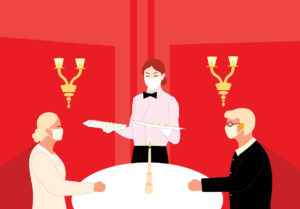 The food business has long operated on the brink of terror. Before the 20th century, when the U.S. became the best-fed country in the history of the world, people were dependent on the whims of the apocalyptic horsemen to feed their families. Prayers and sacrifices were made to save the harvest from famine and pestilence, drought and war, floods and hurricanes. Most wars were fought because one tribe wanted to steal the food of another tribe.
The food business has long operated on the brink of terror. Before the 20th century, when the U.S. became the best-fed country in the history of the world, people were dependent on the whims of the apocalyptic horsemen to feed their families. Prayers and sacrifices were made to save the harvest from famine and pestilence, drought and war, floods and hurricanes. Most wars were fought because one tribe wanted to steal the food of another tribe.
Most of Europe fought over the cod waters. Eastern Poland moved back and forth to Russia a couple times a century. Germany and France traded Alsace, Lorraine and Champagne with every war for centuries. The French even built secret subterranean cellars to hide their wines for the Germans. Iran and Russia still skirmish over the sturgeon waters that produce the magic eggs of caviar. Iowa started the Honey War with Missouri in 1839. Iowa won, too, but in the Supreme Court, extending our southern border some 8 miles into bee hive country. The Yankee army prevailed over the Confederates only after Grant blockaded Vicksburg and Sherman burned the crops of Georgia, shutting down the food supply to Lee’s armies.
In the grander schemes of history, the last three months have been more of an inconvenience than a terror. In the kitchens and dining rooms of the city, though, it has seemed more drastic. It’s definitely been more dire in the meat processing centers of the state. Somehow, the food lines carried on. We ran out of toilet paper but not eggs. We couldn’t find a bottle of hand cleaner for a few weeks, but dairy
shelves were full. Beef got expensive, but it never stopped being available. Restaurants and bars closed down for a couple months, but they have been reopening for weeks now.
Things are trending the right way for the food industry now, but most people want to know, “When will it get back to normal?” The easy answer is never. Since Heraclitus walked the cobblestone streets of Ephesus 2,500 years ago, wise men have believed that “no man steps in the same river twice for it’s not the same river and he’s not the same man.”
Even so, it’s a good idea to look at how different businesses coped with the time of the pandemic. Since Plato wrote that necessity is the mother of invention, a century or so after Heraclitus, the ingenuity of men and women in the face of hard times has proved to be as useful as any tool for moving forward.
Basic Bird
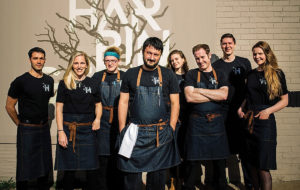
Joe Tripp and his Harbinger team on Ingersoll. In response the COVID-19 pandemic woes, Tripp shut down the cafe and reopened with a focus on Korean fried chicken. Image created by Byron C. Jones Photography.
As drastic as any restaurant’s plan B was Basic Bird’s. Joe Tripp completely shut down his Harbinger café on Ingersoll. He then reopened with basically one — and only one — new menu item.
“Some foods travel better than others. Harbinger’s small plates are designed for inside dining. When I learned we had qualified for the Paycheck Protection Program, I decided to switch to Korean fried chicken with a choice of several Korean side dishes. Even when
restaurants were allowed to reopen at limited capacity, I knew it wasn’t time. We are too small (about 60 seats) to be successful at less than full capacity. The PPP money made it possible to keep a few of my best employees and operate at a profit, despite far less overall
business, because of the lower labor costs. I was really pleased how well the chicken did. People love this recipe,” he said.
Boneless pieces of breast meat are marinated in Korean spices and fried. Two sauces are offered and so are a choice of sides such as cucumber kim chi, cheese corn, potato salad, ramen salad and chicken rice. Steam buns are the only regular menu item offered, with Korean chicken, pork belly, or, on rare occasions, shortbreads. Tripp is looking for a new location to open Basic Bird when Harbinger reopens.
Other places transformed themselves for carryout and curbside pickup. Master Chef Jerry Talerico and his daughter Sophia opened a pop up called Tally Ho to Go as an homage to Vic’s Tally Ho, Jerry’s father’s place. This is an exciting upscale menu with dishes like grouper with Hollandaise and crab, bayou fried oysters, chicken Bearnaise, prime rib, steaks, Caesar salad, and French onion soup. Those last two were famous at Vic’s long before they were well known here. Sophia was living in Cape Cod when the terror began and decided to quarantine back home. They are operating out of Merle Hay Plaza food court. One of Jerry’s previous restaurants was named for Sophia.
Mike Wedeking of Flying Mango has been serving curbside pickup only. Barbecue, his specialty, travels very well as a take-out food. Also, chef Derek Eidson of Django is operating a BBQ pickup business out of Django, where French fine dining is a harder sell for carryout. Hours are more flexible, too, with Q. One advantage of the curbside pickup business model is that transactions are taken care of financially on the phone or the web.
“It’s one of the few good things. It takes less time, and no one has to touch someone else’s money or credit card,” says Cyd Koehn of Cyd’s Catering. Koehn says she has lost more than $800,000 in business since St. Patrick’s Day. “There is no end in sight either. I am now getting cancellations of Christmas parties. I used to serve parties of several hundred people. Now it’s 20 tops. Plus, each plate has to be separately packaged,” she said.
Koehn thinks other major challenges include the labor force.
“Oh, my, it’s hard to get people to come back to work when they can actually make more money on unemployment. I should have labor by the holidays, though, since Iowa State is shutting down from before Thanksgiving till Jan. 11,” she added.
To created new business, Koehn has initiated new services.
“I use the Internet now more than ever to get the word out. I waive the $35 delivery fee for people who pick up, and I am delighted that many opt for that. I have done ‘Dine on your boat’ baskets, ‘Dine Poolside,’ ‘Date Night packages,’ ‘Foodie Father’s Day,’ ‘Wine and Dine’ packages, and my favorite is this couple who were planning on a major celebration in France but is now having it at home. Ben Nelson is selecting the French wines; I am buying the French cheeses and cooking the meal,” she said.
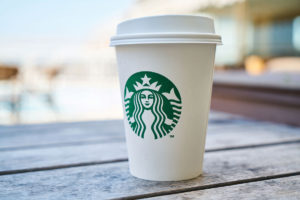
Starbucks leads the chains in percentage of stores transitioning from sit-down to take-out.
Image by Engin Akyurt from Pixabay
Many places reduced their menus during carryoutonly days. Aposto offered three-course dinners at bargain prices. Trostel’s Greenbriar concentrated on daily specials with prime rib on weekends.
Several chefs said they worry about garbage accumulation. The city of Dubuque in June announced its landfills were taking in 9 percent more trash than a year ago. Carry-out packaging accounts for lots of this.
“Remember before the pandemic, everyone was so critical of people using plastic? They were so worried about the fish and the turtles being hurt by plastic. Now, everyone wants their plastic. What happened to he turtles?” asked Koehn.
George Formaro of Django, Centro, Malo, Zombie Burger and Gateway Market Café thinks the biggest challenges are labor costs and other compliance burdens.
“To keep things sanitized and to regulate social distancing will require more labor. No one thinks about it, but plastic gloves are really expensive when you change them 20 or more times a day as required,” he said.
Formaro and Tripp are collaborating on a happy event to defy the virus.
“With the state fair canceled, we want to get some restaurants together to have a state fair week. Ideas would include imitations and deconstructions of state fair foods plus some fun fair-like games of chance,” said Formaro.
“Like throwing darts at balloons under which are prizes such as free stuff or discounts,” added Tripp.
Table cloth dining may be terminally threated. They were disappearing before the troubles because of laundry costs, which have risen dramatically. It’s not feasible to replace them for every sitting. The pandemic is an opportunity to end their use.
The Big Boys

Jessica Dunker of the Iowa
Restaurant Association says
Iowa has more cafes per
person than Omaha or Wichita
or San Francisco.
In most times, the chains and franchises have an advantage over small independent restaurants. Deep pockets, national advertising and brand names create research departments that can test market products for years before bringing them out. In a crisis like the pandemic of
2020, that all is more of a liability than an asset. Emergencies like this require quick individual responses, like those Tripp, Wedeking, Koehn, Eidson and Talerico have brainstormed.
Chains and franchises are built on the premise that customers demand consistency. A Big Mac and fries in Des Moines should taste like the same order on the Spanish Steps (the world’s busiest McDonalds and restaurant) and in Times Square. They don’t want rogues marketing new stuff under their names. Yet that is precisely what it takes to get through a crisis of the current magnitude.
It is really hard to find a special at a chain that is a unique response to the crisis, rather than an old special that has been offered for years. Checking out the deals at Ruby Tuesday, Olive Garden, Red Lobster, Texas Roadhouse and Perkins are exclusively about small discounts. Things like Wednesday and Thursday discounts and early bird specials (Texas Roadhouse), family pricing (Red Lobster), “buy one, take one to
go” (Olive Garden), and free pie days (Perkins). Most all have senior discounts, but they require joining a
list or club. Taco Bell offers senior discounts without being asked. McDonalds was regularly changing its $1, $2, $3 menu. The only special dish I found at a fast food chain during the problems was a Lake Winnipeg walleye at Culver’s. That is an annual, and it ended earlier than usual this year.
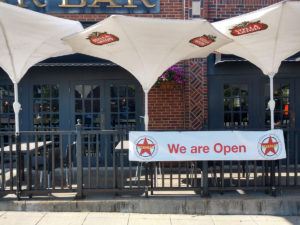
Many local eateries have eagerly posted “We are Open” signs. Photo by Jim Duncan
Chains are so inflexible that places that specialize in cooking when ordered, like Hardee’s and Culver’s, closed their carry-out stations and predictably had long, slow lines at their drive-through windows. The chains that seemed best equipped for the crisis were the ones that have always carried a menu that is suited well for carry out: pizza, burgers, Chinese, chicken and barbecue. If fast food chains did anything right to prepare for these times, it was figuring out a way to keep french fries hot and crisp on long rides home by coating them with things like rice flour. But the chains that did that did it decades ago.
The chain that seemed to do most to reinvent itself in the pandemic was Starbucks. They already were working on a plan to downsize, but they accelerated it the last three months. In June they announced plans to transition many of their stores to pick-up only locations in major cities and to add curbside pickup, as well as drive-through and walkup windows in the suburbs. Some of the busiest stores will also be renovated to create a separate counter for mobile orders in order to make pickup easier.
The once relentlessly expanding company now says it will shutter as many as 400 company-owned cafes over the next 18 months. Just before the pandemic, Starbucks reported 80 percent of its orders were already made on a to-go basis. As more customers ordered through the Starbucks app, the company planned to modify its cafes over the next three to five years. The pandemic moved up that timeline.
Starbucks announced in June that about 90 percent of its U.S. and China stores had reopened. They also said they will decelerate new store growth by about 50 percent, from 600 to 300 in the next years. CNN reported that the company lost as much as $3.2 billion during the hard times. That’s a lot of coffee.
While Starbucks leads the chains in percentage of stores transitioning from sit-down orders to takeout, that has been happening almost everywhere for a while. Most burger joints announced that take-out orders passed sit-down orders in the early part of the new millennium. And it’s been increasing ever since. So this is probably the most irreversible trend for all coming out of the troubles.
The future?
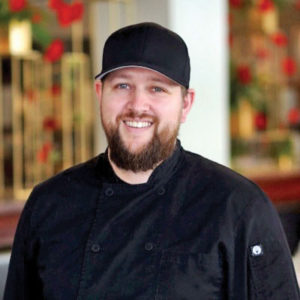
Derek Eidson is operating a BBQ pickup business out of jango, where French fine dining has been a harder sell for carryout.
Formaro told us that delivery services have increased “percent of sales” in his restaurants for a few years. This is tough on restaurants because the cost of delivery is charged to them as much as to customers. Consumer Reports lists serving more people beyond the four walls of a café as the No. 1 challenge post pandemic. Alinea, the small Chicago café that won the maximum three stars from Michelin, has doubled its previous business in two years by embracing this model.
In Toronto, casual-dining restaurant Lake Inez transitioned from dine-in service to a weekly themed take-out service that includes three courses, a wine pairing, a “love letter,” candles and a music playlist. According to Consumer Reports, they sold out their first seven weeks in just minutes, and there is currently a waiting list to join.
What other crisis trends are here to stay, or here till they can go away? Packaging costs and labor costs are not going away. When your packaging becomes part of the ambiance of a dining experience, it needs to be upgraded. Bubba wins the award for the nicest packaging of to-go orders in town, but lots of people are trying harder, even fast food places. Taking customers’ temperatures and wiping down counters and menus require more labor. Compliance with any health codes costs money. This probably means that the labor has to become less specialized. Formaro says he has been working every job in his restaurants for the first time in years. At Fiesta in West Des Moines recently, my host became my bartender and then my waiter.
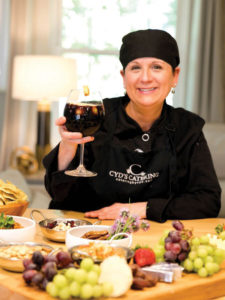
Cyd Koehn of Cyd’s Catering says the limited labor force has been a major challenge for her business. She has focused much of her efforts on themed packages.
Most people I talked to think that buffets and salad bars will be gone, at least until there is a vaccine or a cure for the virus. John & Nick’s has been serving a garden salad and their legendary cottage cheese from their closed salad bar.
That demand on talent will probably make hiring top workers more competitive. With so many places downsizing, there will be lots of good workers coming back into the market — at least when the state stops paying them more to stay unemployed than they can make working.
Because of that, getting workers back to work is a big problem for bars and restaurants. Most owners say they are afraid to complain about the refusal to go off the public dole because they fear reprisals from disgruntled workers. Sometimes the cure is worse than the disease.
How does one predict the overall damage? Jessica Dunker, head of the Iowa Restaurant Association, told us that Des Moines and Iowa were both overbuilt in restaurants per capita. In fact, we not only had more cafés per person than comparable cities like Omaha and Wichita, but we had more than café-crazed San Francisco.
So, this is a culling of the herd. Formaro thinks that those who survive and those who fail will depend more upon landlords and loan managers than any other factor. Others think it depends on the willingness of customers, some with newly discovered cooking skills, to go out in public again.
From the crowds I witnessed writing this story, those customers are growing fast now. ♦




















